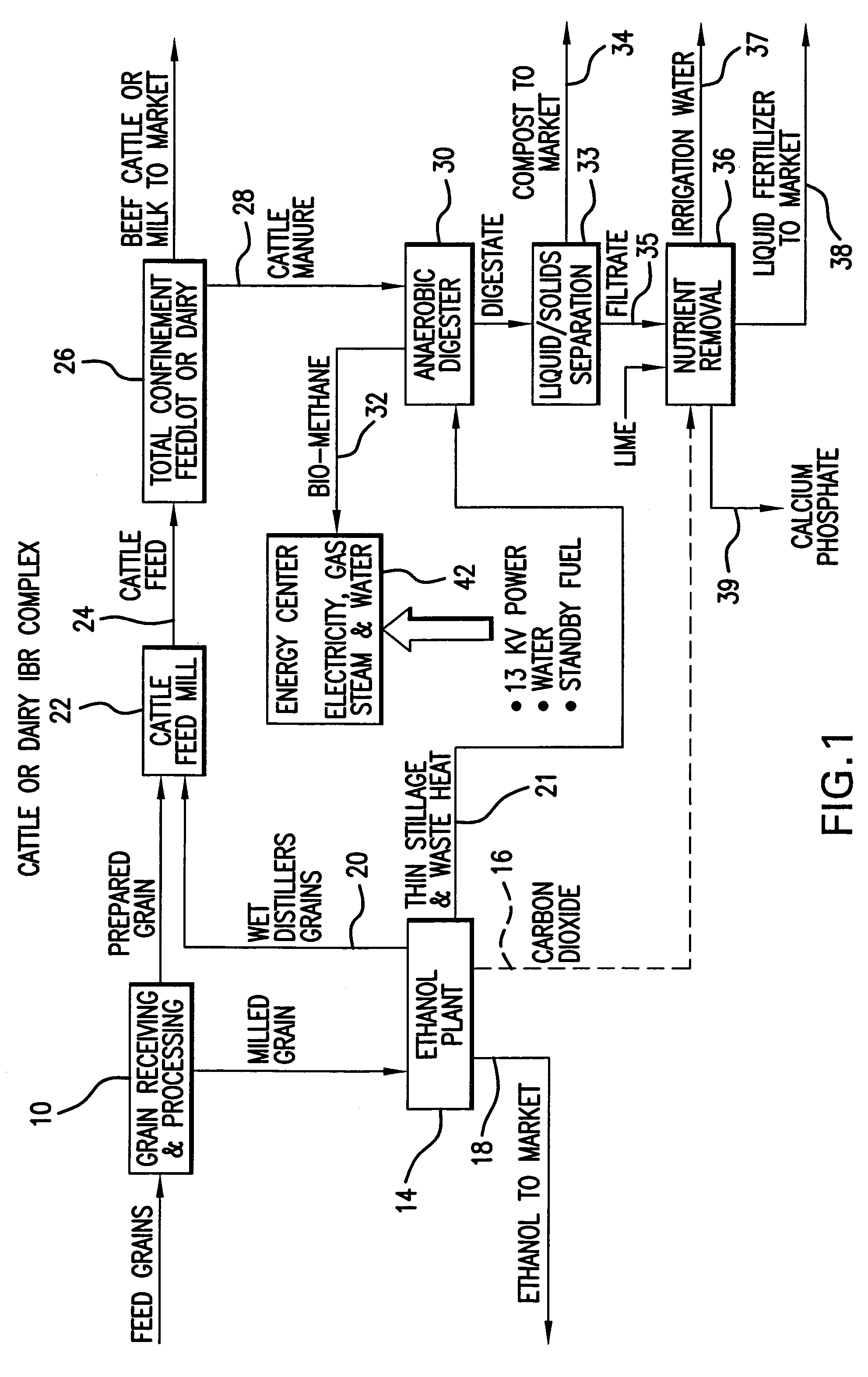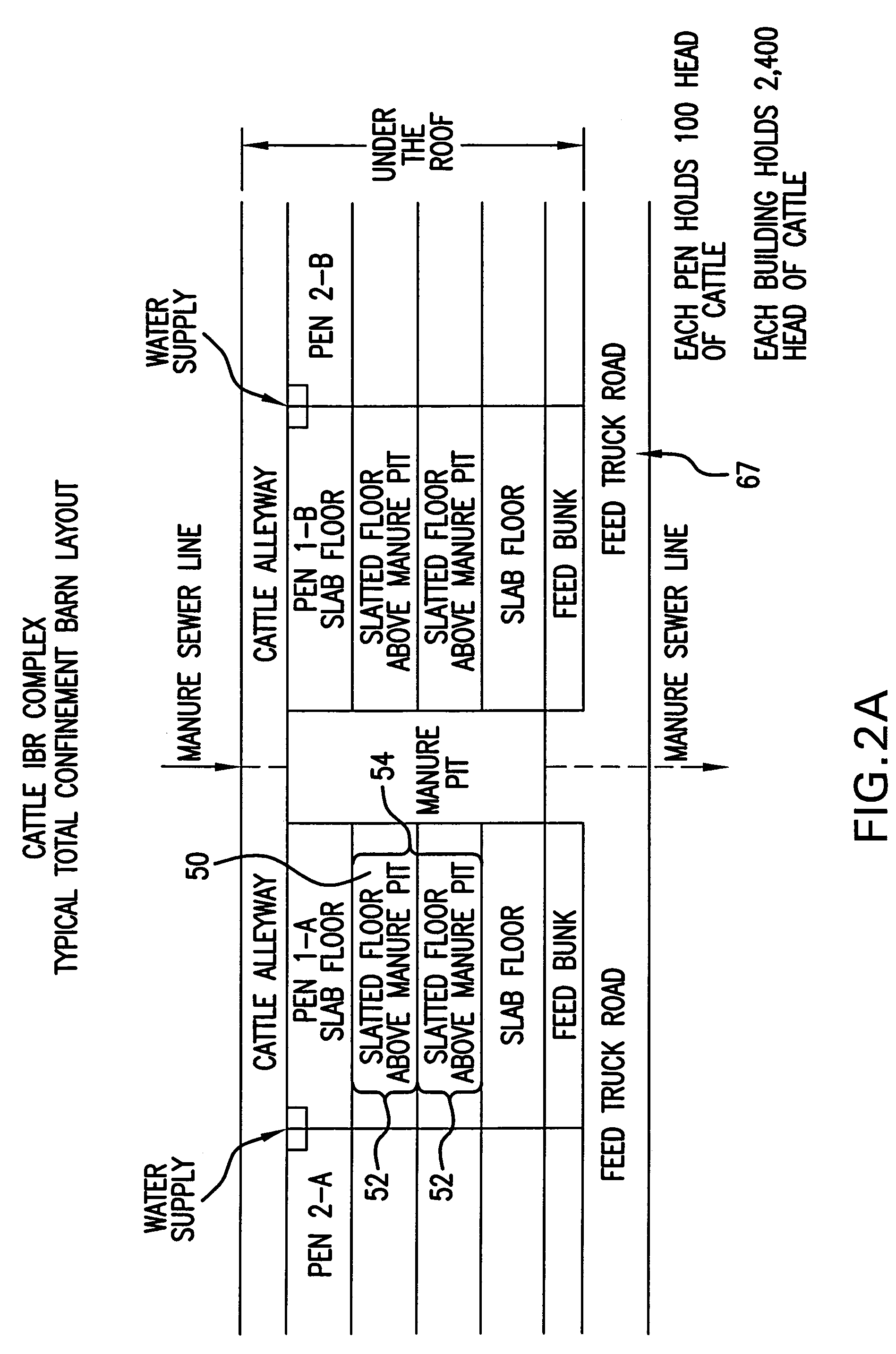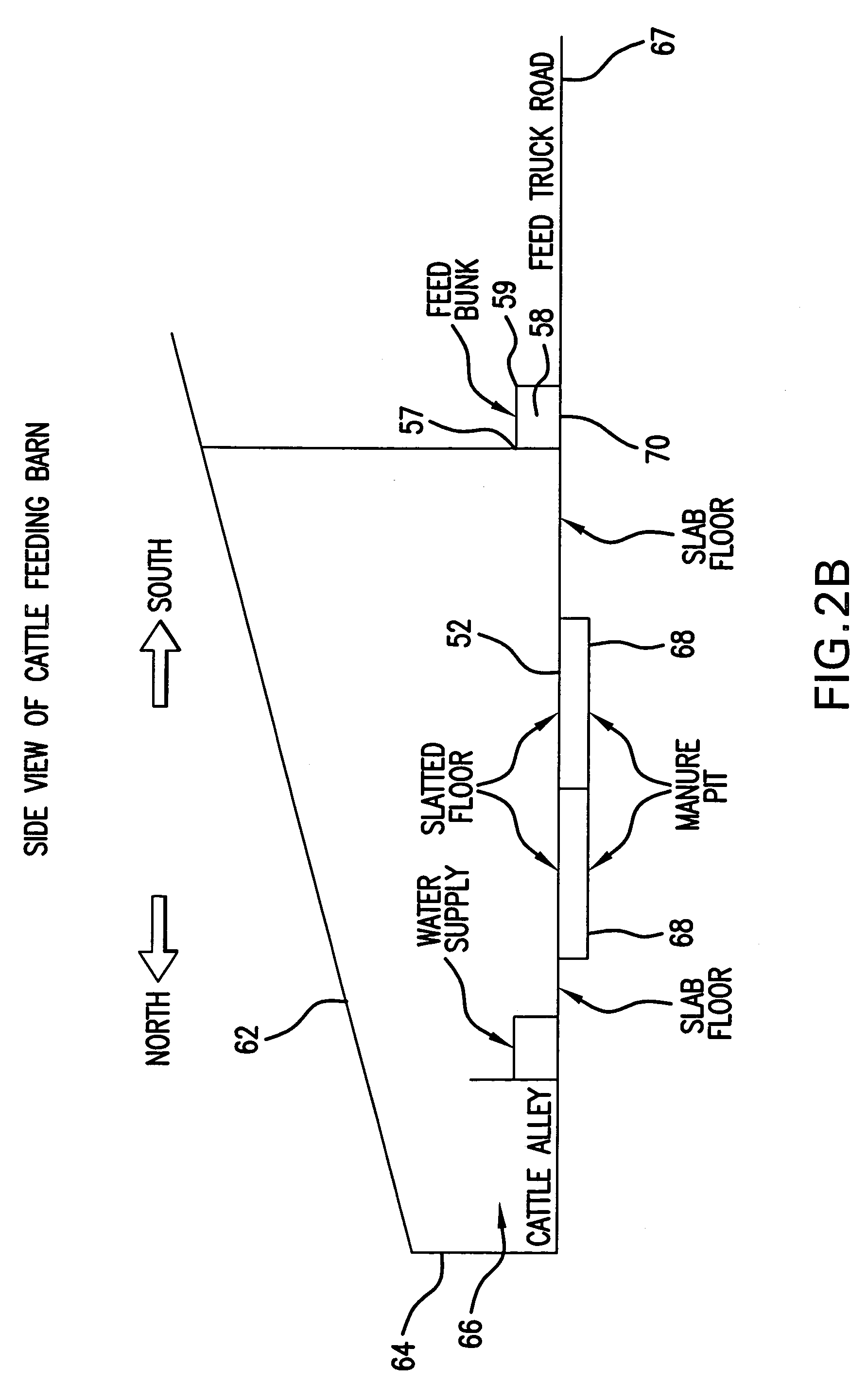Integrated process for producing "clean beef" (or milk), ethanol, cattle feed and bio-gas/bio-fertilizer
a technology of integrated process and clean beef, which is applied in the field of integrated process for producing clean beef (or milk), ethanol, cattle feed and biogas/biofertilizer, can solve the problems of stifling capital investment in new plants, high natural gas costs, and overwhelming feedyards' ability to manage, so as to reduce ammonia build-up, increase bio-gas output, and reduce the effect of ammonia build-up
- Summary
- Abstract
- Description
- Claims
- Application Information
AI Technical Summary
Benefits of technology
Problems solved by technology
Method used
Image
Examples
Embodiment Construction
[0062]FIG. 1 depicts the process with illustration of the major apparatus components utilized therein. Corn from a grain receiving unit 10 is fed to a conventional milling device, preferably like those used in “dry mill” ethanol plants, for preparing the feed to the ethanol plant (fermenters) 14. The major products of the fermentation are carbon dioxide 16, ethanol 18, and “wet cake” (WDG) 20, waste heat, and thin stillage 21. The wet cake 20 is fed to a feed mixer 22 wherein it is blended with a ratio of wet cake:grain of 25:75 to 80:20. The mixed feed 24 is then passed to an enclosed cattle feedlot or dairy 26 where cattle or other livestock are fattened prior to processing, or milk is produced. The animals can be slaughtered and routed to an on-site meat packing plant to produce a high quality product. Manure 28 is collected from the enclosed CAFO and fed to digesters 30 to produce a bio-gas (principally methane) 32 and the residue is introduced into a solids / liquid separator and...
PUM
| Property | Measurement | Unit |
|---|---|---|
| temperature | aaaaa | aaaaa |
| weight | aaaaa | aaaaa |
| body weight gain | aaaaa | aaaaa |
Abstract
Description
Claims
Application Information
 Login to View More
Login to View More - R&D
- Intellectual Property
- Life Sciences
- Materials
- Tech Scout
- Unparalleled Data Quality
- Higher Quality Content
- 60% Fewer Hallucinations
Browse by: Latest US Patents, China's latest patents, Technical Efficacy Thesaurus, Application Domain, Technology Topic, Popular Technical Reports.
© 2025 PatSnap. All rights reserved.Legal|Privacy policy|Modern Slavery Act Transparency Statement|Sitemap|About US| Contact US: help@patsnap.com



